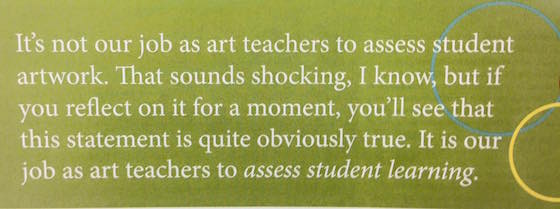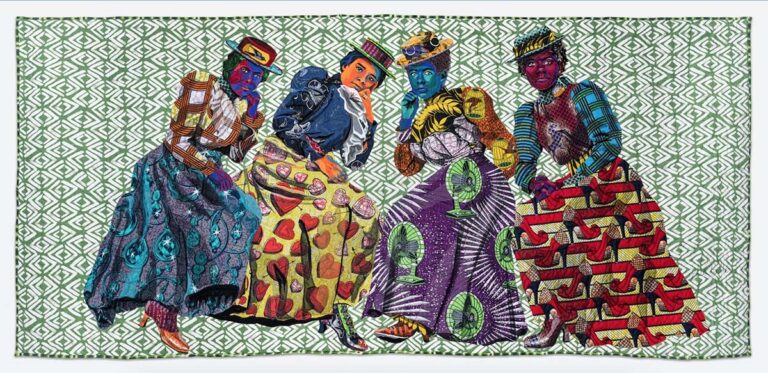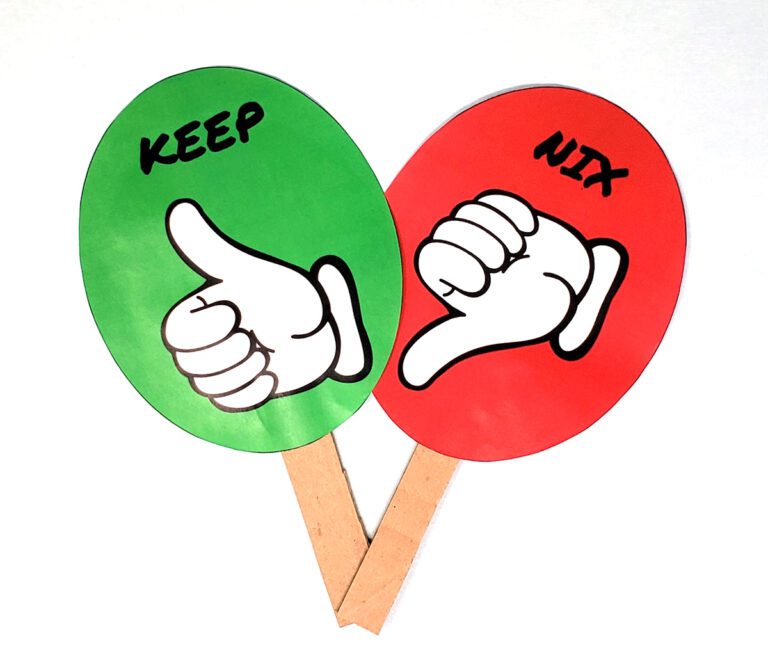
I recently encountered this quote online. The words are by one of my favorite art ed gurus, Olivia Gude. She’s the mind behind Spiral Workshop and was a member of the Next Generation Standards writing team. I deeply agree with this statement, even though it’s controversial. Here’s why.
When we assess artwork, we typically only assess a few things:
- How the student followed directions
- How the student applied media or process
Neither one of these is hugely important. Following directions is good and, often, a necessary thing. The problem with using it as a measure for developing a grade is that it’s not reflective of learning.
Following directions is about behavior, not what students know or can demonstrate. The place for evaluating it is a participation grade. If you’re basing grades on things like students having the correct number of values in a drawing or both warm and cool colors in a painting, you are not assessing knowledge – you are assessing how well directions were followed, which is a poor measure of learning.
As for applying media and process, sure, art teachers need to think about how students have progressed with art-making skills. Unfortunately, with the pressure to produce work that’s visually appealing, we place too much value in this area at the cost of other skills like creative thinking. We need to focus our teaching and evaluation around what students think in addition to what they make.
We should stop assessing student artwork because it is such a limited measure of learning.
If we truly want our students to develop as artists, we need to look at what an artist does holistically, which is what the National Standards ask us to do.
So, how should we assess student learning?
The National Standards are made up of eleven Anchor Standards which are divided into four main areas of learning: Creating, Presenting, Responding, and Connecting. We need to assess student learning in each of these areas. Finished artwork is a measure of learning, but it’s not the only one. We also need to look at process: how children develop ideas, solve problems, organize concepts, and make decisions. We need to assess how students process artwork: the way they analyze, evaluate and interpret works of art and culture.

So, should we stop assessing artwork? Yes, if it’s all we evaluate. Finished student work is only one measure of learning, so “artwork” has to mean more than the finished product. It has to mean the thought behind it, the reason it was made, cultural context, and how we respond to it. That’s what we need to teach and assess.
{image source}
What things do you think are important to assess? Let us know in the comments below.
Magazine articles and podcasts are opinions of professional education contributors and do not necessarily represent the position of the Art of Education University (AOEU) or its academic offerings. Contributors use terms in the way they are most often talked about in the scope of their educational experiences.




